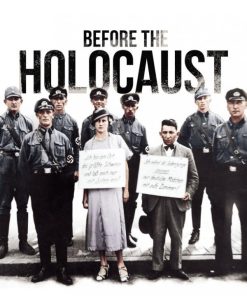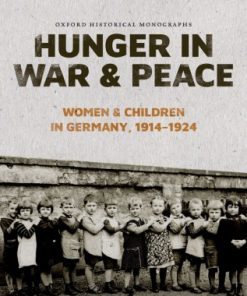Bystander Society: Conformity and Complicity in Nazi Germany and the Holocaust Mary Fulbrook
$50.00 Original price was: $50.00.$25.00Current price is: $25.00.
Bystander Society: Conformity and Complicity in Nazi Germany and the Holocaust – Ebook Instant Download/Delivery ISBN(s): 9780197691717,0197691714

Product details:
- ISBN-10 : 0197691714
- ISBN-13 : 978-0197691717
-
Author(s): Mary Fulbrook
In this powerful and revelatory new work, historian Mary Fulbrook takes on one of the most fraught issues in modern times: the role of ordinary Germans in enabling the rise of Nazism and with it the exclusion, persecution, and then extermination of millions of people across Europe. The question often asked of the Nazi era―what and when did ordinary Germans know about the crimes being committed in their name?―is, Fulbrook argues, the wrong one. The real question is how they interpreted and acted―or failed to act―upon what they knew; and how, in the process, became complicit.
To address these issues, Fulbrook examines German society before and during the Nazi regime, exploring the social conditions that eventually facilitated mass murder. She explores the creation of a “bystander society,” one in which the majority of Germans were either unable to act or developed growing indifference to the fate of those deemed “non-Aryan”―mainly Jews― and therefore outside the Volksgemeinschaft, or national community. Over the course of the 1930s, from Hitler’s assumption of the German chancellorship, through the passage of the Nuremberg Laws, to the devastation of Kristallnacht, this “bystander society” became more entrenched. Ordinary Germans became passive about the fate of “non-Aryans” and, by turning away, contributed to their isolation from mainstream society. For many citizens of the Reich, conformity led progressively through growing complicity in everyday racism to more active involvement in genocide during World War Two. In other words, social changes under Nazi rule shaped the perceptions and responses of German citizens, creating the conditions that made the Holocaust possible.
Table contents:
Introduction: Bystanders and collective violence
PART I THE SLIPPERY SLOPE: SOCIAL SEGREGATION IN NAZI GERMANY
1. Lives in Germany before 1933
2. Falling into line: spring 1933
3. Ripping apart at the seams: the racialization of identity, 1933-4
4. Shifting communities: dissembling and the cost of conformity
5. A nation of Aryans? The normalization of racial discrimination
PART II THE EXPANSION OF VIOLENCE AT HOME AND ABROAD
6. Changing horizons: views from within and without
7. Shock waves: polarization in peacetime society, November 1938
8. Divided fates: empathy, exit, and death, 1939-41
9. Over the precipice: from persecution to genocide in the Baltics
10. Inner emigration and the fiction of ignorance
11. Towards the end: rescue, survival, and self-justifications
CONCLUSION
12. The bystander myth and responses to violence
People also search:
bystander effect conformity
sociology bystander effect
conformity and the bystander effect
f. what are the responsibilities of a bystander
bystanderism ib psychology
victim bystander perpetrator
bystander/bystander effect
conformity and bystander effect
You may also like…
Politics & Philosophy - Social Sciences
Marriages, Families, and Relationships: Making Choices in a Diverse Society 13th Edition
Politics & Philosophy - Warfare & Defence
Uncategorized
Politics & Philosophy - Cultural
History - European History
Politics & Philosophy - Anthropology
Hunger in War and Peace: Women and Children in Germany, 1914–1924 Mary Elisabeth Cox












